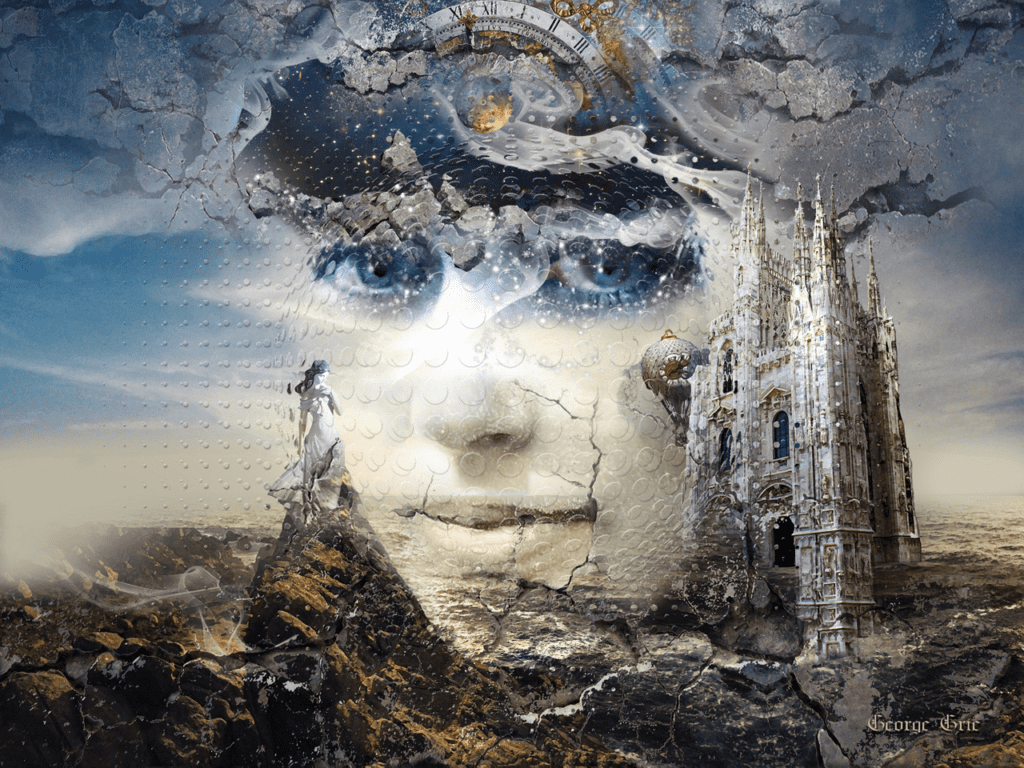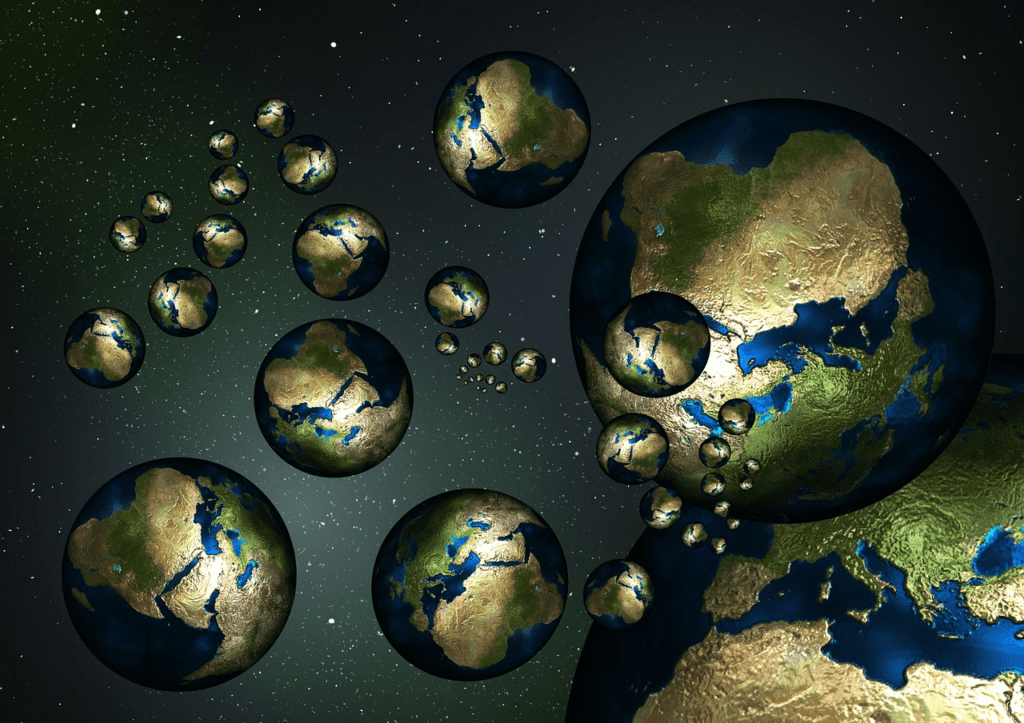What is a parallel world?
The concept of parallel worlds often sparks grand dreams in people’s minds. Imagining alternate universes where different choices lead to entirely different outcomes suggests the possibility of accessing such realities.
The idea that not only particles and fields, but even humans could be transported between universes suggests the tantalizing prospect of inhabiting a universe that surpasses our current one. This concept is firmly rooted in theoretical physics, exploring possibilities derived from quantum mechanics and the multiverse hypothesis.
However, what do these worlds have to do with reality that can be observed and measured? Recently, we heard that evidence of the existence of parallel universes has been discovered, but Jordan Colby Cox asks the following about the significance of this.
There is currently an article circulating claiming that physicists have found evidence of parallel universes in Antarctica. However, there is no factual basis or scientific consensus supporting such a claim. It’s important to approach such assertions critically and await confirmation from credible scientific sources before accepting them as true.

From a physics perspective, parallel universes are a captivating concept that sparks imagination, yet verifying their existence remains highly challenging. The idea of parallel universes stems from quantum mechanics, a field known for its inherent unpredictability. Even with complete knowledge of a system’s configurations, predicting outcomes is impossible. For instance, when a single electron passes through a double slit, one can calculate the probability of its landing position, but pinpointing the exact spot is beyond current capabilities.
In quantum mechanics, the many-worlds interpretation (MWI) proposes a fascinating concept where every possible outcome of a quantum event actually happens, but each outcome unfolds in a separate universe. This implies an infinite number of universes where all conceivable outcomes manifest. Importantly, there are no experimental or observational findings that disprove this interpretation, rendering it as valid as other interpretations within the realm of quantum mechanics.

The next time the existence of parallel worlds and universes attracted attention in the world of physics was due to its connection with the concept of the multiverse. Our universe was formed by the high-temperature Big Bang around 13.8 billion years ago. However, the Big Bang is not considered the absolute beginning of parallel worlds in the universe. Before that, there is another phase known as “cosmic inflation,” which precedes the Big Bang. Once inflation concludes, the Big Bang event occurs.

However, inflation does not end uniformly across the entire universe. In regions where inflation persists without ending, it could lead to further expansion and potentially trigger additional big bang events over larger areas. Once inflation begins, it is exceedingly difficult to halt, and it will inevitably continue in some regions.
As time progresses, numerous additional big bangs occur independently. These events do not interfere with one another, giving rise to countless separate parallel universes. This concept is known as the multiverse. In an ever-expanding space-time, it is hypothesized that many distinct universes emerge due to ongoing inflation that continues independently in isolated regions. This scientific premise underpins the multiverse theory and reconciles why multiple universes can coexist without contradiction. Despite the vast number of universes generated by inflation, it remains insufficient to encompass all possible quantum mechanical outcomes within individual universes.
The major challenge lies in the inability to experimentally test these theories and constrain predictions regarding parallel universes. If we are confined within our own universe, how can we access or interact with other universes? Our universe operates according to its own set of physics laws, which have consistently governed the behavior of particles and energy quanta. Particles do not spontaneously appear, vanish, or alter their properties; their existence and behavior are governed by interactions with other matter and energy quanta, all following established physical laws.

Even with all the results and records from experiments and observations to date, no interaction has been found that cannot be explained within the confines of our isolated universe.
However, recent headlines have reported that scientists may have discovered evidence of parallel universes in Antarctica. If true, this would undoubtedly be a groundbreaking discovery. Such a claim suggests that our current understanding of the universe is incomplete and there is much more yet to be learned and discovered than previously thought.
If this claim is true, not only does another parallel universe exist somewhere, but its matter and energy interact with those of our own universe. This could potentially transform the realm of science fiction, previously confined to the realm of wild imagination, into reality. It might even open the door to the possibility of traveling to other universes. In such universes:
- She might decide to work abroad instead of staying in her own country.
- She might stand up to the bully rather than being left alone.
- She might catch the guy who was about to run away and kiss her in the middle of the night.
Parallel Worlds in other pocket universes (bubble universes)
In the multiverse, there exist parallel worlds within other pocket universes (bubble universes) created by theoretical physics, or elsewhere, where life-or-death events that you once faced with your loved ones had different outcomes.
The noteworthy evidence suggesting the existence of parallel universes comes from the Antarctic Impulsive Transient Antenna Experiment (ANITA), which uses a radio-sensitive observation balloon. During its operations, ANITA detected radio waves with specific energy signatures originating from beneath the Antarctic ice. This observation was unexpected because it indicated that cosmic particles, including neutrinos that are typically hard to detect, might be interacting in ways that were not predicted by current physics theories.
These findings have sparked considerable interest and debate in the scientific community. They suggest the possibility of interactions between our universe and others, possibly within a multiverse framework where different physical laws and conditions may apply. Further research and analysis are ongoing to validate and interpret these observations within the context of existing theoretical models.
Neutrinos, which are fundamental particles, originate from various celestial sources including the sun, stars, pulsars, black holes, and possibly from unknown and mysterious objects in the universe. These particles are incredibly elusive and can pass through ordinary matter almost unaffected due to their weak interactions with other particles.
The Antarctic Impulsive Transient Antenna Experiment (ANITA), conducted with an observation balloon over Antarctica, detected unexpected radio waves originating from particles that were previously thought to be undetectable. This discovery has intrigued scientists because it suggests interactions or phenomena that defy current understanding of particle physics and astrophysics.
Neutrinos exhibit a wide range of energy levels, with the highest energy neutrinos being particularly rare. Despite their abundance in the universe, detecting them is challenging; even a barrier as massive as 100 million light years of lead has only a 50% chance of capturing a passing neutrino. As a result, neutrinos are observed arriving from all directions in space, providing insights into cosmic processes and phenomena that remain mysterious and intriguing to researchers.

The high-energy neutrinos observed do not originate from distant cosmic sources. Instead, they are produced when other highly energetic cosmic particles collide with the Earth’s upper atmosphere, generating a cascade of particles that includes neutrinos. Some of these neutrinos pass entirely through the Earth, interacting only with the outermost crust or ice, where their signals can be detected.
The peculiar phenomenon detected in the ANITA experiment aligns with the understanding that neutrinos can generate radio waves as they traverse through matter like the Earth. However, the energy levels involved are so immense that these neutrinos cannot penetrate through the entire Earth without interacting and emitting detectable signals. This observation underscores the incredible energy and rare nature of the neutrinos being studied in experiments like ANITA.
The phenomenon of detecting high-energy neutrinos through the Earth has been observed three times. However, in each case, the neutrinos did not necessarily need to pass completely through the Earth. The first two instances likely involved regular air showers of tau neutrinos, one of the three types of neutrinos. The third instance was likely attributed to experimental background noise.
Contrary to initial speculation, there is substantial evidence to refute the notion that these neutrinos passed through the Earth. The IceCube Neutrino Observatory, which is sensitive to high-energy tau neutrinos passing through Antarctic ice, has not detected any such signals. This absence of detection strongly suggests that high-energy tau neutrinos are not regularly passing through the Earth and Antarctic ice as previously hypothesized.

From a scientific standpoint, the interpretation can be summarized as follows:
- The radio signals detected by ANITA remain unexplained.
- The initial hypothesis that high-energy tau neutrinos travel upwards through the Earth has been disproven by observations from the IceCube Neutrino Observatory.
- There is no identifiable point source of celestial bodies generating the particles indirectly observed by ANITA.
Given these points, the existence of parallel universes or parallel worlds remains speculative and unsupported by the current observations and theories in physics. The anomalies detected by ANITA do not conclusively point towards parallel universes as an explanation. Therefore, the question of where exactly these anomalies originate remains unanswered within the current scientific understanding.
Based on the scientific investigation into ANITA’s observations, there are three plausible explanations:
- Existence of an Object: There could be an unknown celestial object producing the observed particles.
- Equipment Malfunction or Data Interpretation Error: It’s possible that the observations are due to a malfunction in the observation equipment or a misinterpretation of the data.
- CPT Violation: This would involve a rare phenomenon where fundamental symmetries like charge, parity, and time (CPT) are violated. However, this explanation is considered unlikely and not supported by current understanding.
As of January, the first possibility (existence of an object) has been effectively ruled out, leaving the second possibility (equipment malfunction or data interpretation error) as the most plausible explanation for ANITA’s observations. The third possibility (CPT violation) remains speculative and lacks sufficient evidence to support it. Therefore, while the mystery of ANITA’s observations persists, it is likely rooted in an issue related to the equipment or data analysis rather than a breakthrough discovery related to parallel universes or CPT violation.

Science progresses through rigorous testing and verification of theories against experimental evidence. Over the past decade, several surprising claims have emerged, but upon thorough investigation, they have been disproven. Examples include neutrinos not exceeding the speed of light, the non-discovery of dark matter and sterile neutrinos, the absence of cold fusion, and the failure of the purported “recoilless engine.”
This narrative underscores the essence of good science: an experiment like ANITA observes an unexpected phenomenon and publishes its results. Subsequently, a more refined experiment like IceCube verifies the phenomenon and refutes the initial leading theory. This process strongly indicates discrepancies in the initial findings, prompting further scientific inquiry to uncover the truth.
Based on current scientific evidence, the existence of parallel universes remains a concept rooted in science fiction rather than established scientific fact.
Must Read: IS JAPAN OVER? 1 CLEAR ANSWER TO THE DEBATE
